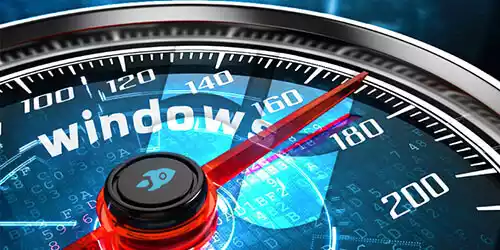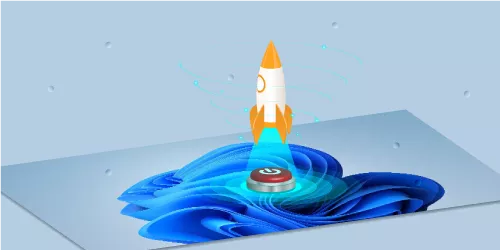How to Make Laptop Faster Windows 10
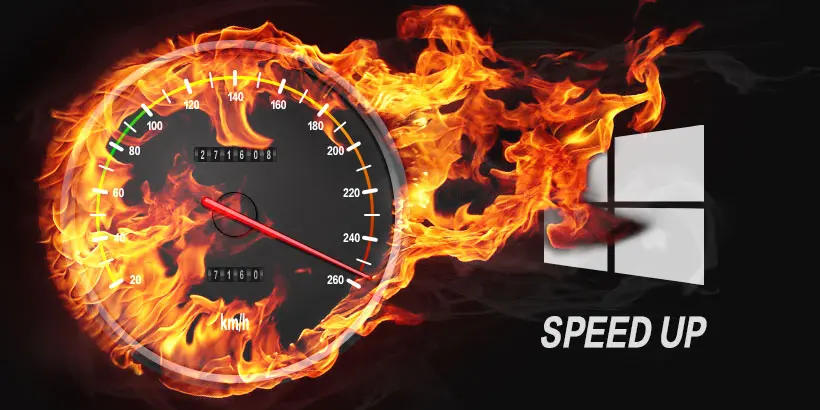
Although Windows 10 is perhaps the most efficient coded operating system from Microsoft, the problem of computer not running smoothly still exists. Before you consider using another computer, why don't you try some simple software and hardware tricks to make Windows 10 run faster? This article will tell you some common reasons why your laptop runs slowly and will give you 7 useful ways to change this situation.
The reason why your laptop runs slowly can be analyzed from the perspective of hardware and software. From the perspective of hardware, insufficient computer memory, poor CPU heat dissipation and disk problems will cause wins 10 to run too slowly. If you know the reasons why your window10 runs too slowly from the hardware perspective, you can solve the problem according to the article: How to Speed Up Your Computer (Windows 10, 8, 7).
In most cases, one of the important reasons why the system runs slowly is that it generates a lot of garbage data and useless registry information during the use. These data will greatly occupy the memory and reduce the computer operating efficiency. Therefore, we need to delete the useless data regularly.
Method 1: Delete garbage data
Steps:
1. Click "This PC" twice, or hold down the Win +E key to open this computer interface.
2. Move the mouse to Drive C and right click. Select "Properties" from the pop-up screen. The operation of other disks is the same.
3. In the local Disk (C :) properties screen, find and click Disk Cleanup
4. In the cleanup screen of Drive C, all the files that can be deleted will be listed. Choose the files you want to delete and click the Clean System Files button in the lower left corner.
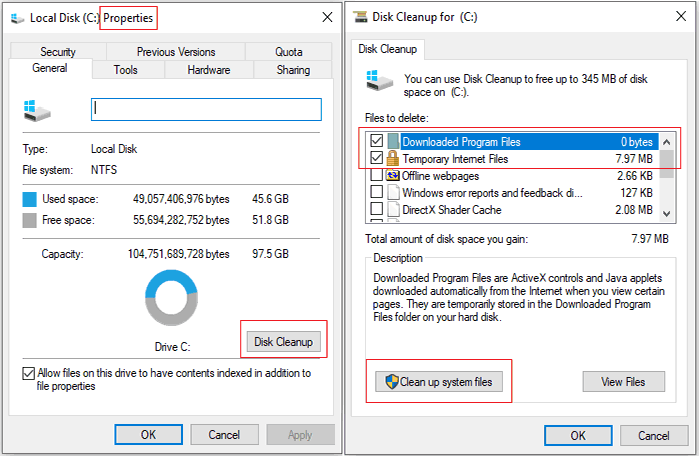
Method 2: Clean up the registry
Steps:
1. Type the "regedit" command in the search box at the bottom left corner of the desktop, then open the ‘Registry Editor'
2. Find and click "HKEY_LOCAL_MACHINE" in the left interface. Use the same operation to open "SOFTWARE\ Microsoft\ windows\ CurrentVersion\ Uninstall"
3. After opening "Uninstall" file, right click the uninstalled files you want to delete in the options below. Click the "delete" to clean up registry information.
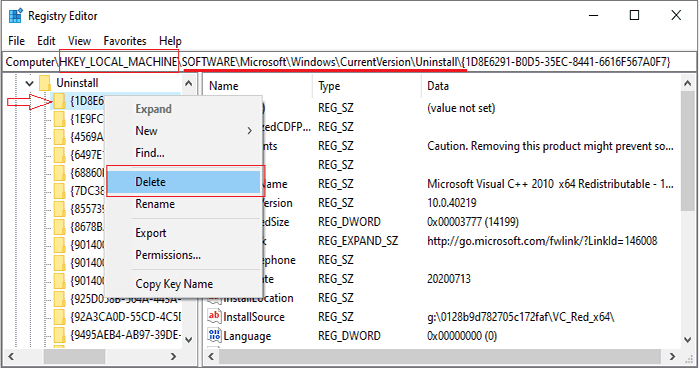
There is an easy way to delete garbage data and clean up the registry: use System Genius. No need to follow above steps to clean useless data and afraid of deleting something essential by accident. You can clean all the junk files and registry with just 3 clicks by using it without judging which file can be deleted or not. Step:Clean All > Scan > Clean
Computer software includes system software and applications. Some of the system software that comes with Windows 10 is not what we want, so before we download new apps to replace them, we can delete those apps to avoid occupying too much memory.
Method 3: Uninstall system pre-installed software
Steps:
Open the wins icon in the bottom left corner of desktop(as the picture shows), right click the app you want to delete and choose "delete" in the pop-up prompt window.
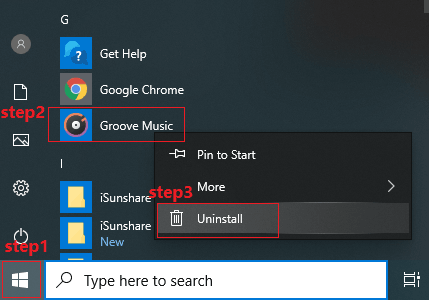
Method 4: Disable unnecessary system services
Many of the services that come with the Wins10 system do not need to be started when we don't need them. These services can be disabled directly and restarted when needed. Microsoft continues to release Windows 10 updates, aimed at fixing common errors and making pc run faster. Some of them will make major changes to our system to maximize efficiency. If the computer does not have the automatic update, it is necessary to update operating system patch frequently.
Steps:
1. Press Win + R shortcut to open the "Run" command window. Type msconfig and click "ok" button to open the interface of system settings
2. You can find out all the system services on the "Services" tab. Remember to check Hide all Microsoft services to avoid system errors due to disabling system services by accident.
3. What you need to do in this step is to choose the unnecessary services and disable them as you like.
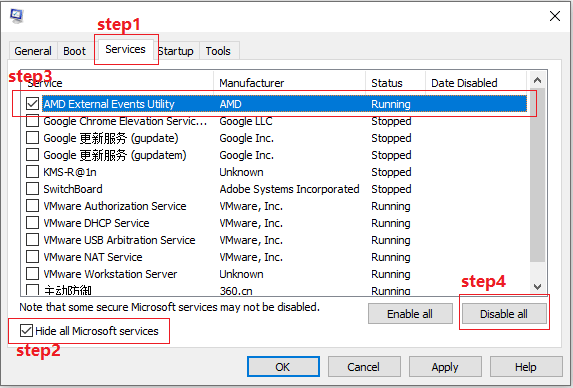
After hiding all Microsoft services, is it still unclear whether the remaining services are necessary to run? Try the System Service function of System Genius. It lists the names, status and modes of all system services in a table. More importantly, it has advice for each service to run. You can see a detailed description of the system service functions. This will help you better understand the services and decide to "Disable" or "Enable" them. Just hover the mouse over the advice for a few seconds and you'll see it.
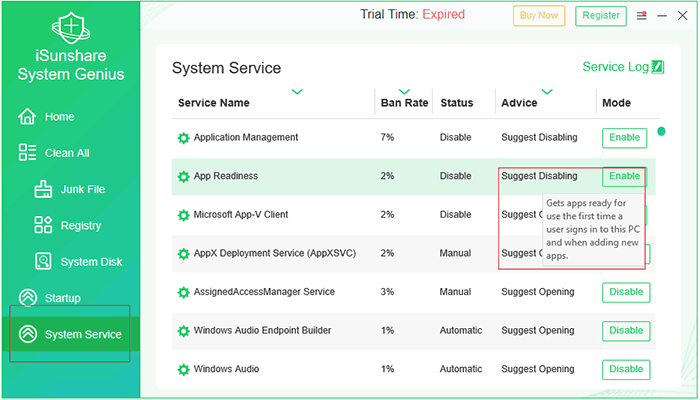
Not curious about the reason for stopping system services, but just want to quickly stop unnecessary services? System Genius can also help you! Click on "Advice" and it will help you prioritize all services recommended for deactivation. You just need to click "Disable" button on the right to stop the specific services.
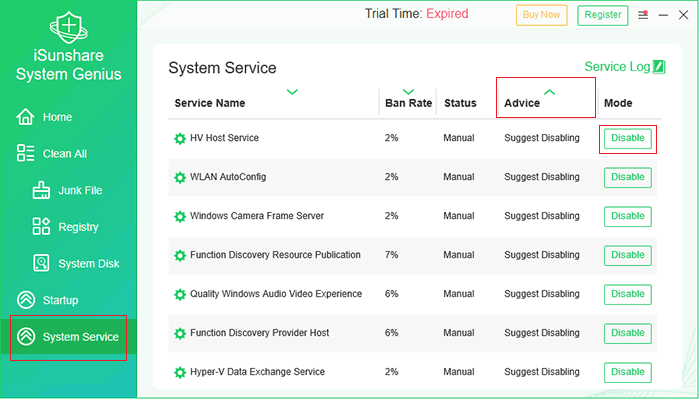
Method 5: Update system patch
If the machine is lagging, type "update" in the search bar and click "Check for updates" to make Windows 10 run faster. If there are major updates, be sure to save and back up your personal data before continuing. After saving your data, click "download" to update.
Please note that your PC might need to be rebooted several times before all available updates can be applied. If it's been a while since you last updated, be sure to click "Check for Updates" again after rebooting to make sure you have a list of more updates available.
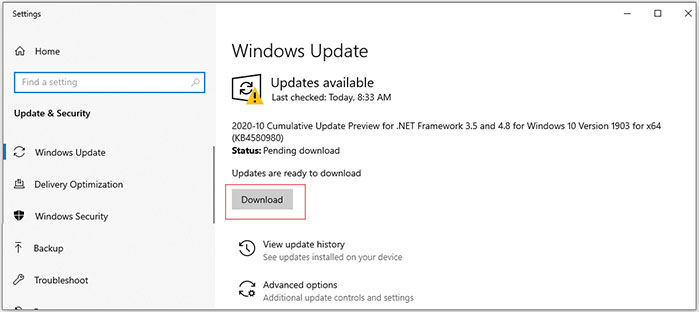
Method 6: Create a new account
Setting up multiple accounts can spread out the junk files generated in different scenarios, reducing the frequency of garbage cleaning and software deletion and saving you time. So try using different accounts for different scenarios to enjoy the benefits of your new account. In addition, the new account will not affect the installed software if you back them up.
Firstly, backup the software shortcut to the non-system, generally Drive D will be fine. Create a new folder on Drive D and copy the software into it. Then we can create a new account.
Steps to create a new account:
1. Open the control panel and choose "User Accounts > Manage another account > add someone else in this pc" one by one.
2. In this step, you can login your Microsoft account or choose "I don't have this person's sign-in information". Then "add a user without a Microsoft account".
3. Type your account password and set your security questions. The security questions must be set for it can be used to retrieve the password. Finishing the above steps, a new account is created.
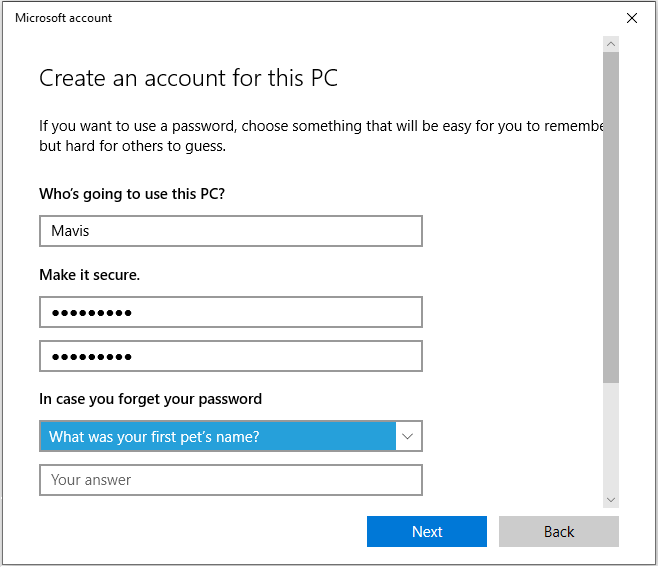
If your new account requires administrator rights, click "Change account type" to change it.
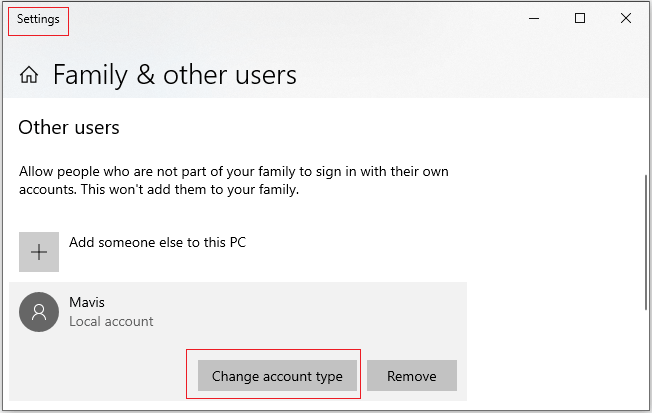
Finally, log in to a new account. When you want to log in to a new account, you can either log out of your current account or press the Win + L to choose to log in to a new account. After you enter your password and complete a brief setup, a brand new account appears. Don't forget to copy the D disk shortcut to the desktop, for these software will work.
Method 7: Optimize system with software
If you don't want to spend a lot of time learning so many system services to speed up your computer, or you are not sure which files or service should be deleted or stopped, using a third-party software is a nice choice for you. There is an app I highly recommend—System Genius.
This is an app that can optimize system easily and quickly. In addition to cleaning up the garbage data, delete the registry and manage system services, it can also release the C disk space with 1 click, change the default download location of files and manage the startup software.
Its operation is really simple - only 1 to 4 steps to complete. For example, to change the default download transfer location of a file, choose "Download Transfer" in the "System Disk". Then what you need to do is to select the disk you like and click "Move". Besides, System Genius is fast for it can scan and render results in seconds, saving you a lot of time and making Windows 10 run faster.
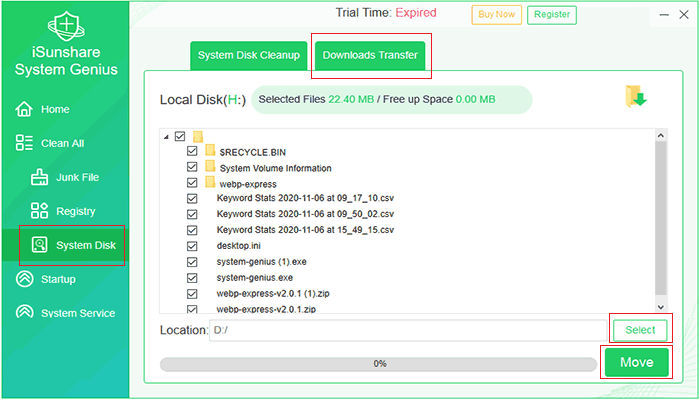
After trying these software tricks, reboot your computer and you are likely to get a faster Windows 10.
Download: System Genius


